Interview with ‘Just a Guy’ director Shoko Hara
The infamous American serial killer Richard Ramirez once described himself during an interview as ‘just a guy’, a phrase at odds with his legacy of horrific crimes and the satanic messages left in his wake. Unusually for a film about one of the most well known and documented serial killers of the 20th century, the stop-motion short documentary Just a Guy, directed by Shoko Hara, shifts its focus from the main atrocities and victims to the women who reached out to Ramirez romantically during his incarceration. With a ‘bad-boy’ persona and rock star image amplified by the media, Ramirez amassed many fans and groupies; whether they were simply intrigued, sexually fascinated or indeed even in love, Ramirez had no shortage of female interest and even married his most dedicated admirer whilst awaiting execution before his death in 2013.
Just a Guy offers unique and unusual insights through not only documenting the testimonials of some of his female devotees – including his long time girlfriend Eva O – but from the director’s own personal correspondence with Ramirez. The film’s raw visuals and agile animation style, combined with elements of collage and archive footage, create a rich, acidic visualisation of the fascinating world of death row relationships and the women who nurture them. Having been officially selected for ITFS Stuttgart, Dokville, HotDocs and, most recently, this year’s Annecy International Animation Festival as part of its Perspectives selection, the film handles the duality of ethics, emotions and love in the most unlikely of places. We were lucky enough to grab some time with Shoko to find out more.
Thank you very much for talking to me today. Can I ask how you first came across the women who had contacted Ramirez?
I had read a book by Philip Carlo called The Nightstalker. He interviewed Richard Ramirez for 400 hours and it is actually about this criminal career and his trials, but women were mentioned too by name. So, I started to research these women, one of which was Eva O. She was his first girlfriend after he got caught, so I sent her a message on Facebook and she immediately was interested to talk with me about it. The second woman, Sarah, I knew since I was 15. We were both part of the same metal scene at the time and it was easy to reach her.
Why did you feel compelled to contact him yourself?
I actually didn’t feel compelled to contact him. The contact came through Sarah, the second character, since we knew each other already and I knew that she corresponded with Richard Ramirez. In 2011 she asked me to take pictures with her because she knew that he had a fetish for feet and Asian girls. Sarah describes herself as the death row inmate supporter, so she wanted to do him a favour. I agreed, more out of curiosity and naivety, I guess, and she printed out pictures, left the small note like “Greetings from Germany” and sent them to him.

Just a Guy (Dir. Shoko Hara)
So, then you received a reply. How did you feel about that? And why did you choose not to contact him again?
I was scared because I didn’t expect an answer. Richard Ramirez sent the letter first to Sarah and she gave it to me. Sarah pushed me to respond, but I was too scared because that would mean that he had my real address and I thought he might know someone else outside, who could kidnap me or something like that, like Charles Manson. Plus, I was also worried that he might lose his interest in Sarah as well. She didn’t care and just wanted me to make him happy, but I did care. I have never taken away someone’s boyfriend for my own advantage. Which is normal, right? And I also had a boyfriend at the time. He called me sick when I told him about it. He said he didn’t want to be with someone who is in touch with a serial killer. So yeah, I didn’t write to him.
I admire the way you’re able to deal with such a difficult subject without sensationalising it or demonising anyone involved. The film, in general, must have been quite difficult to approach ethically.
It was really hard to deal with that. During the research, pre-production, I switched between the two sides, the victims and the murderer. I considered the research from both directions. I am compassionate to the relatives of the victims, of course, but I also do understand the women who stand behind the murderer, somehow. So, it was really important to me to not glorify Richard Ramirez and show the women as authentically as possible without any judgement. This film is about the women who fall in love with serial killers, and not about the crime or the murderers themselves.
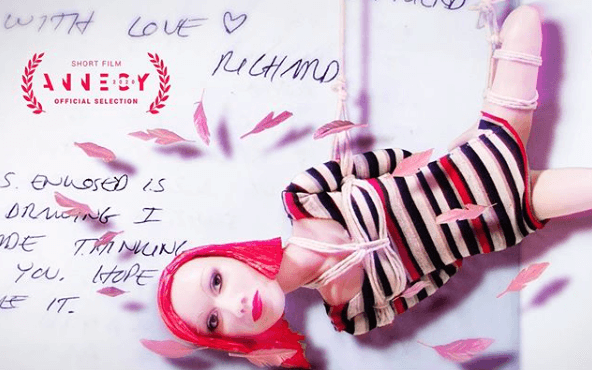
Just a Guy (Dir. Shoko Hara)
Were there any discussions you had, outside of what’s presented in the film with the women about why they choose Ramirez specifically? And their cause for contacting him in the first place?
Yes, of course. I also wanted to understand this too. I think I understand it now. Because back then he was really, really handsome. I don’t know how you feel about it. Do you find him handsome?
No, I also don’t think I would ever be able to. I don’t think I’d ever be able to separate him from his actions.
Yeah, I understand that too, but he had this aura, or this energy. I think he had those bad boy eyes, and he always left crime scenes with satanic symbols, which shows that he is a dangerous guy. And in the 80s and 90s rock and metal was very popular for young people. I think it felt more like contacting a celebrity, a rock star, because he really looked like a rock star and had this evil soul. Additionally, Sarah is sexually submissive, so she wanted to have someone who tells her what to do and controls her. She didn’t buy that kind of role play with normal guys. So, she chose Richard Ramirez to get that real thrill.
And do you think from your discussions with Sarah and Eva, that you’ve come to any conclusion as to why these women are compelled to contact these kinds of extreme criminals?
Yeah, I figured out that it’s a control thing. These women have these dangerous murderers behind bars under control, and they cannot escape, they cannot have sex with other women. You always know where they are, you feel more secure about him or your relationship. And since the inmates have a lot of time and are always bored, they appreciate any kind of attention they get. They will always answer your letters but their contact time is really limited. So you both try to spend time with your lover as intensely as possible with a lot of communication. I think this kind of connection develops when you take care of a relationship, but on the outside, this doesn’t often happen because people are too distracted. With a lover behind bars you have a real feeling of exclusivity, I guess.
Did you ever contact anyone other than Ramirez?
No, I didn’t.
As we were saying earlier it’s quite difficult to separate him from what he is known for, especially if that’s part of the excitement of the interaction. How much did you know about all his various crimes before you contacted him? And then how much research did you do for the film after? And how did you handle that knowledge when producing the film?
When I received the letter, I only knew what he looked like and a few facts from Wikipedia. Since he looked old – he was around 50 and I was 21 – I didn’t find him attractive at all. That was all I knew at that time, so when I decided to make a film about it, I researched a lot. I watched a lot of documentaries and read a lot about him. I also tried to contact his niece and his other girlfriends, but I really got to know him through the many original letters Eva brought from California to Germany when I interviewed her, and I figured out that he’s not that easy. The way the media described him and how he acted was as if he was a dangerous Satanist because of the publicity. But he was more a wannabe rock star, evil I guess, but I figured out that he’s wasn’t as smart as he looked, he was not well educated, which was also a turn off for me. Actually, he was a poor, lonely guy with almost normal feelings. He cried, even, for example, when Eva left or when he missed her, and he loved her a lot, I felt, but when it came to his crimes he didn’t have any regrets or compassion. So, I tried to show those sides of him in my film, too.
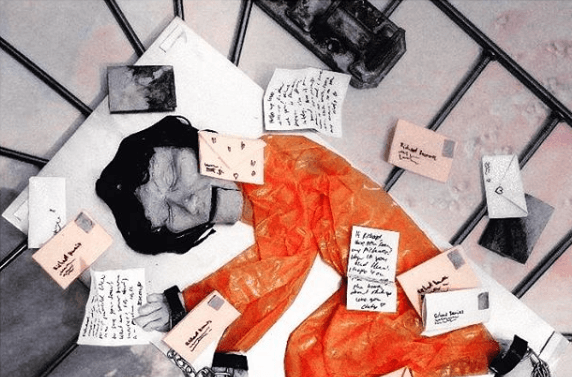
Just a Guy (Dir. Shoko Hara)
It was almost as if he was still a teenager, he was clearly quite emotionally stunted and had had a very odd upbringing that didn’t, for him, equate with the horrific crimes he committed and how that was wrong.
Yes, exactly.
So why did you want to make the film about both your own and these other woman’s affiliation with him?
Even though I don’t have that much to tell about him like other women – because I didn’t have a relationship with him, it was only a letter – I wanted to include myself in the film to create a dialogue with the protagonist. I didn’t want to say all these women are crazy, I wanted to show the different intentions for contacting a serial killer. For Eva, it was real love. For Sarah it was more for her sexual benefit and for me, it was more out of curiosity and naivety. So, before people put a label on these women who contacted him, we have to differentiate their intentions.
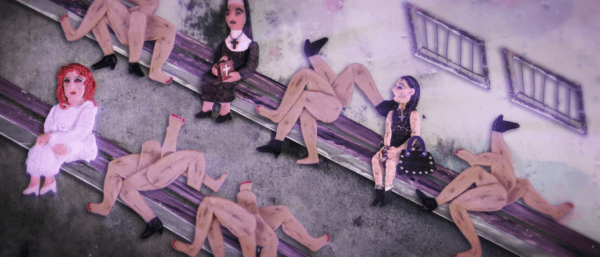
Just a Guy (Dir. Shoko Hara)
You also tried to contact Doreen, who was the woman eventually married him. Did you ever find out why she didn’t want to be involved in the film?
Oh, Doreen – that’s another story but I really enjoy telling it. I actually wanted to make a film just about her and their marriage. My producer Stefan and I tried so hard to reach her online, we hired a private investigator to figure out her contact addresses and related stuff. I messaged her nephew and her twin sister on Facebook and Instagram. Her twin sister blocked me on Facebook without saying anything. I really wanted to visit her in the US to give her my request letter in person. But all the addresses were wrong. So, I found her on Facebook finally, but she didn’t answer. I found a good friend of hers or maybe a boyfriend? I’m not sure. So, I texted that person and I think he told her and after that, she blocked me and said please stop trying to contact me. I think she doesn’t want to have anything to do with this topic because there was a big shitstorm in the past and she lost family and friends because of it. She grew up in a very Catholic family and she’s living somewhere anonymously now, perhaps even a lonely life somewhere with a new face. I wanted to give her the opportunity to share her own story and view without any judgement, but she didn’t want to, and I had to accept that.
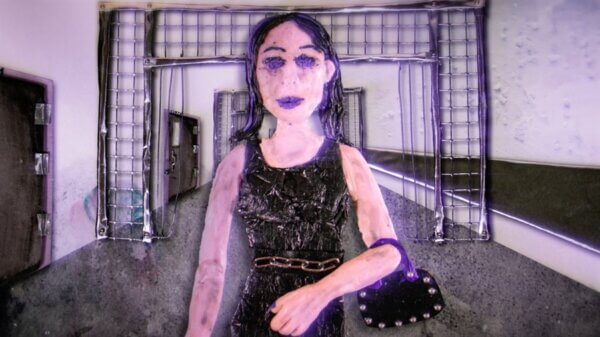
Just a Guy (Dir. Shoko Hara)
Did you come to any assumptions as to whether it was just a point in her life that she isn’t particularly proud of or wants just to put behind her?
I think she’s not proud of it. What I heard is that she married another death row inmate, but I’m not sure. She is working as a freelance journalist for a magazine for children and also in a Police Department. She sold Richard Ramirez’s ashes and with that money, she paid for plastic surgery to change her face to become anonymous. So, I think she’s not proud of it, she just wants to be alone and forget about it, also possibly because of the shitstorm in the past.
How did you and the other women that you did have contact with feel when he passed away? As that’s not something you address in the film.
It was 2013 and I just read about it on Sarah’s Facebook page as she had shared it and was very sad about it, of course – but at that moment, I didn’t feel sad, to be honest. Today I am relieved, more relieved that he is dead because otherwise I would still be too scared and wouldn’t have made this film about him.
I saw that you actually got a lock from San Quentin’s death row. How did you come across that object and do you still have it?
Yeah, I only used it for the trailer for the funding application. So, it’s not in the final film anymore but of course, I wanted to know how the environment of the Orange County and San Quentin death row looked like back then. So, I researched, and I bought it from a collector in the US for $50 and yes, I still have it.
Wow. What do you use it for?
Nothing, it just stands there.
Paperweight?
Yeah, kind of.
You had quite a reasonable sized team that you worked with on this. Could you tell me a bit about what role they played in the film and how that’s benefited both you as a director and the overall production?
They all benefited me and the production. Every single team member believed in this project from the beginning and they worked with passion, which was very important for me. But Stefan, the producer, he had so many sleepless nights because of me, because I wanted to have all these archive materials that were almost impossible to get or pay the licenses for. But somehow, he did it and I really appreciated it. I’m also glad to have Eliott (Deshusses) as the puppet builder and animator, he’s very talented and fast. Also, Valentin (Kemmner) who animated most of the Claymation parts. He was very patient and open-minded whenever I had new ideas or changes spontaneously, and the three of us were locked up for a few months in the basement during the production and we got to know each other very well. And we had a great time together.
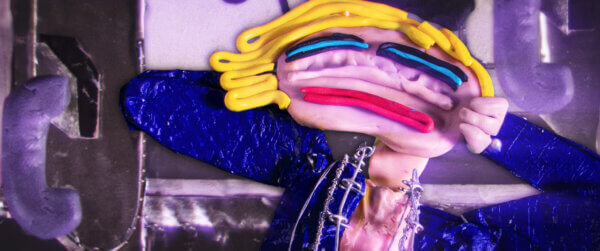
Just a Guy (Dir. Shoko Hara)
Was that to get into the headspace of Ramirez?
Yes, kind of. We listened to a lot of true crime podcasts and stuff. We were very into that at the time. I also want to mention Chiara (Strickland), she was the composer and was involved in this project from the very beginning and I knew she had such a good sense of feelings and was able to express the atmosphere I wanted to have, although I’m not very good at describing music. But she felt exactly the same way I did, and she is such a positive person which is also important, maybe the most important thing when you work with someone. I always work with Marc (Fragstein), the sound designer and Luis (Schöffend), the foley artist, whenever possible. So we are a well-established team. They are always creative; will suggest different things and they know what I want. So, a detailed briefing wasn’t necessary. I just trust them, and they just do it.
You yourself are a very talented and well-educated animator, and your team created some really spectacular shots for the film. Could you tell me a little bit about the production in general and what kind of resources you had to make the film?
Thank you first for this nice compliment. The credit for the puppet goes to Elliot, of course, all I did for the puppet animations was a detailed briefing with a big mood board and visual concepts. In the end, we got two pots of funding. First, the MFG Baden-Württemberg funding was 80,000 euro and a second German film funding was for 15,000 euros. So, in total, we had 95,000 euro to spend, which is still not enough to make that kind of animated film. We could pay the team and for the materials. and it was really helpful of course, but as I said before, the archive materials were really expensive. But somehow, we made it. I know that a few members of the team worked for a low fee. So, I really appreciated that, that passion.
The aesthetic uses quite a lot of mixed approaches including a bit of collage as well as the archive footage and clay animation you mention before. The end result has an almost aggressive feel to it.
Firstly, I’m a huge fan of David Lynch. So, I was inspired by his collages, and assemblages, they have something dark and dirty and ugly that I like. So, if someone knows David Lynch the person, please let me know. Because I’m such a fangirl, I really would like to meet him one day. But just copying a style is not an option for me. I didn’t want to make a dark film because it’s actually about love. I always expected to develop a unique style and my approach to the film was to combine past and present styles with something new or the complete opposite, it all has to relate to the topic.
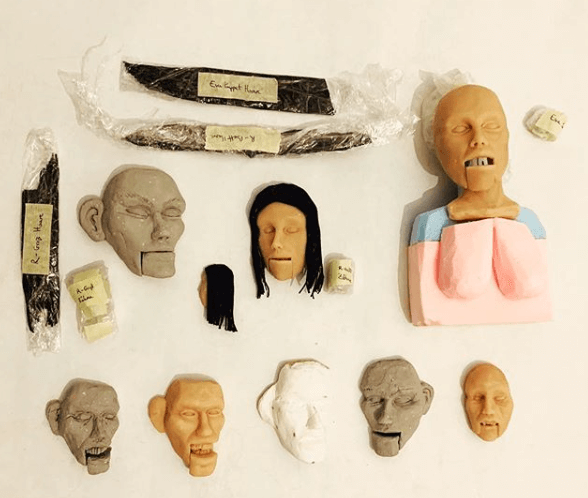
Just a Guy production materials
The film feels perhaps more like an essay film with documentary elements, but your films often are rooted in real situations. What attracts you to making work based on real events and people?
I would say because I didn’t study scriptwriting or film directing, I’m not a good storyteller or cannot make up an exciting story. I also think that reality is crazier and more raw than I can imagine. I’m interested in weird subcultures or fringe groups. They usually don’t get the attention they actually deserve. I’m also such a gossip girl – whenever I experience or hear something crazy or weird, I always have to share it with someone and making a film is the best way to share a story, I guess. A real story.
The film has played at a few festivals now and is currently playing at Annecy. How have you found the response in general to the film?
I’m really, really happy about that. I really didn’t expect so many positive responses and it even won an award at Krakow Film Festival. Since the festival cannot happen physically at the moment, sadly I can’t feel the energy in the audience or their reaction during the screenings in cinemas. I hope to get in touch with the audience in person to talk about the things we’ve talked about here. I’m really grateful to have this opportunity to share more about the film through Skwigly. So, thank you, Laura and to all the others, who have messaged or given me likes on Facebook or Instagram.
What’s the plan for the film moving forward? And are you working on anything else currently or It just focused on continuing to send the film out?
Even though the film was funded, it was still very low budget and an intense process. So I think I need to earn money first, with my motion design work and commissioned films. But I am thinking about a few topics, though none of them are interesting enough yet. After this kind of success, I feel a bit under pressure to make the next film better than this one. So let’s see, nothing is concrete yet.
You can find out more about the film on the Studio Seufz website, or on Shoko’s website Uki Uki. You can also see more behind the scenes content on the film’s Instagram account.


